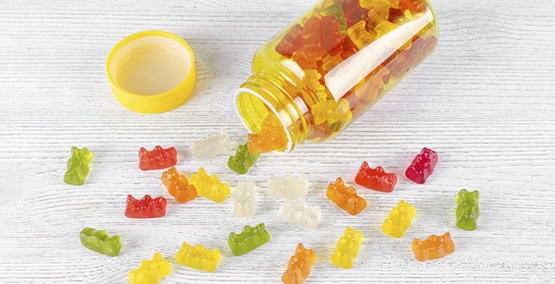
Perfect Snacks for toddlers to teens: Healthy and easy mini meals for kids of every age
Bailey Koch RDN and Kathleen Zelman RDN
Meals are often so spread out for kids, that they need healthy snacks of protein, fiber and fluids in between to keep them going through the day. But the problem is that too often snacks are approached with sugar and other carbs that provide little benefit and instead fill them with empty calories. Thinking of snacks as mini-meals that provide the nutrients and fluid the kids need will help you stock your refrigerator and pantry with healthy food that you can often choose from together.
Age Related Snack Ideas:
Age 9 months up (Infants)
To prevent swallowing or feeding problems, keep the food size small (pieces the size of a blueberry) and soft.
- Avocado, banana slices
- Blueberries, raspberries
- Diced strawberries
- Shredded Cheese
- Scrambled eggs
Ages 2–4 (Toddlers & Preschoolers)
Focus on soft, easy-to-chew textures and smaller portions. Avoid whole nuts, popcorn, and choking hazards.
- Soft fruit slices + full-fat plain yogurt
- Mini whole grain pancakes + nut butter (or sunflower seed butter)
- Hummus + soft veggie sticks (steamed carrots, cucumber, bell pepper strips)
- Scrambled eggs + toast strips
- Cheese cubes + halved grapes or strawberries
- Mini muffins made with oats, banana, and egg
Tip: Use bento-style lunch boxes for visual appeal and variety.
Ages 5–8 (Elementary School)
Kids this age need protein-rich, mess-free snacks that can hold up in a lunchbox and fuel longer school days.
- Cheese stick + apple slices or dried apricots
- Whole grain crackers + hummus or guac
- Greek yogurt tube (frozen) + berries
- Mini turkey-and-cheese wrap
- Trail mix (with seeds, dried fruit, and cereal)
- Mini hard-boiled eggs + whole grain pretzels
Tip: Let them pick one "crunch" and one "dip" when packing snacks.
Ages 9–12 (Tweens)
Appetite increases, and preteens may resist "kid" foods. Focus on balance, energy, and involving them in snack choices.
- DIY trail mix (nuts/seeds + popcorn + dark chocolate chips)
- Apple slices + peanut butter
- Tuna salad + whole grain crackers
- Edamame + string cheese
- Veggie chips + tzatziki dip
- Turkey jerky + pear or grapes
Tip: Stock a "grab & go" snack bin in the pantry or fridge.
Ages 13+ (Teens)
Teens are busy, on-the-go, and more independent. Provide higher protein snacks that satisfy hunger and reduce vending machine visits.
- Protein bar (aim for 10–15g protein, <8g sugar)
- Cottage cheese cup + pineapple chunks
- Whole grain wrap with turkey and avocado
- Boiled egg + banana + handful of almonds
- Smoothie with protein powder, Greek yogurt, and frozen berries
- Rice cakes + almond butter + chia seeds
Tip: Make teens part of snack planning—give them healthy options and let them choose.
Bottom Line: Snacks help kids stay alert in school and keep their energy up during the day. But the choices depend on a child's age.
Resources:
https://nutrition4kids.com/articles/5-protein-secrets-every-parent-needs-to-know/
https://nutrition4kids.com/articles/fiber-made-simple/
https://nutrition4kids.com/articles/page/2/?search=fluids
https://nutrition4kids.com/articles/8-surprising-facts-about-added-sugar-every-parent-should-know/




